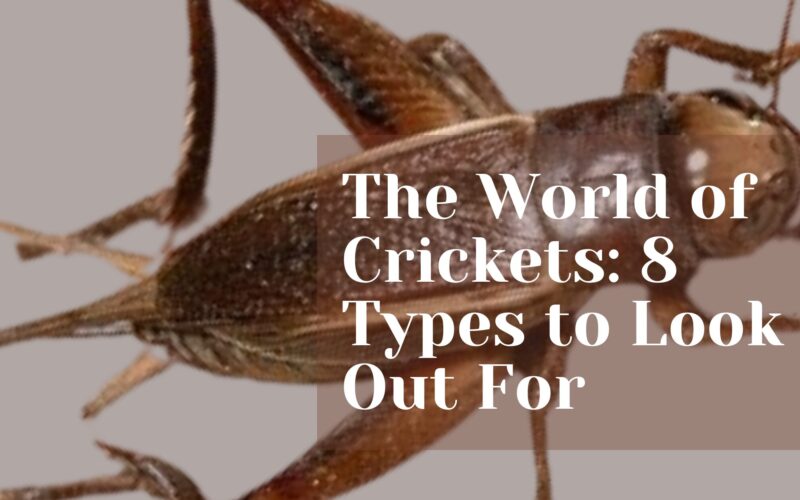Crickets are fascinating insects that have captivated human curiosity for centuries with their distinctive chirping sounds. While their music might be a pleasant addition to a summer night, crickets can also become unwelcome guests in homes, gardens, and agricultural fields.
As pests, they can cause significant damage, making it essential to understand their different types and the necessary control measures. This comprehensive article delves into the world of crickets, exploring eight types that often require pest control and discussing effective strategies to manage them.
1. House Cricket (Acheta domesticus
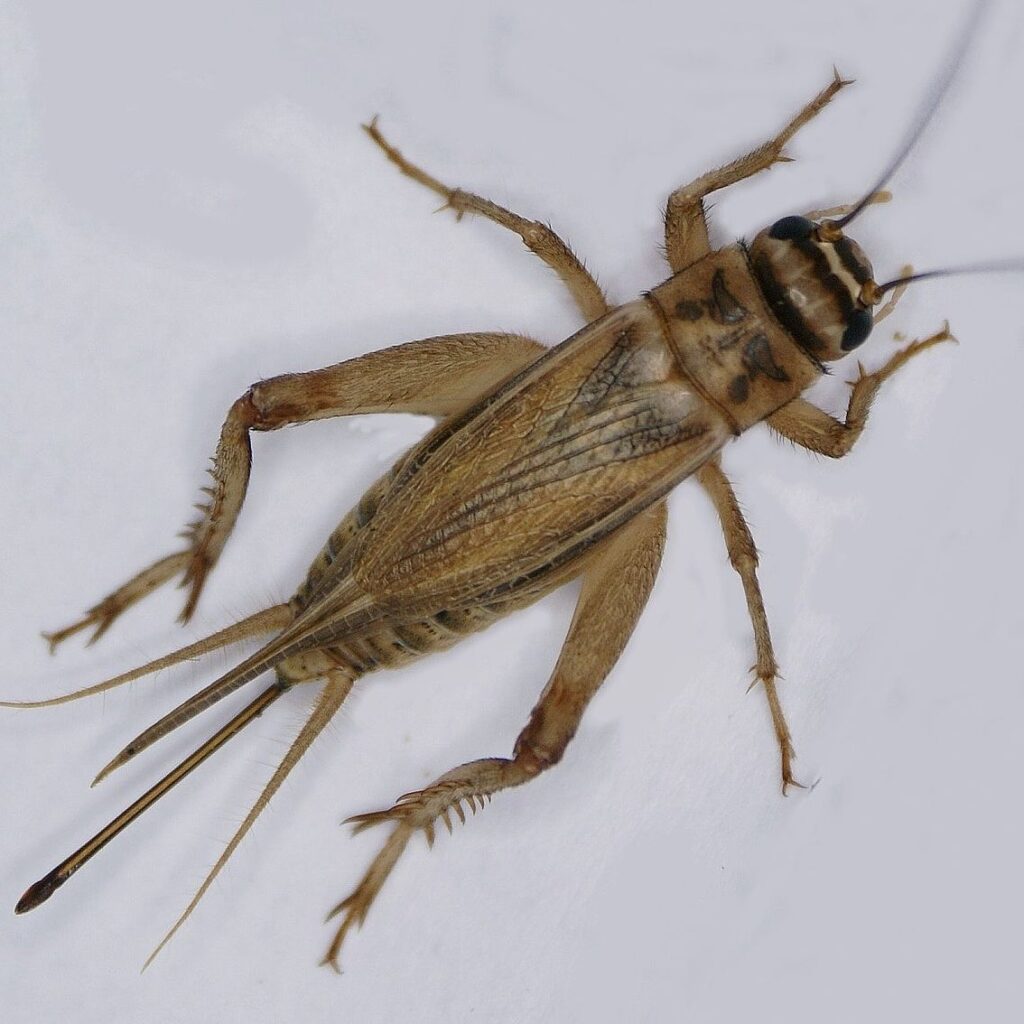
Identification and Habits
House crickets are perhaps the most familiar of all cricket species. They are yellowish-brown with three dark bands on their heads. Adult house crickets grow to about 16–21 millimeters in length and have long, slender antennae and well-developed wings.
Known for their loud, continuous chirping, house crickets produce sounds by rubbing their wings together.House crickets are highly adaptable and can thrive in various environments, though they prefer warm places.
They often enter homes seeking warmth, food, and shelter, particularly during colder months. Inside, they hide in cracks, behind appliances, and under furniture.
Damage and Control
House crickets can be quite destructive indoors. They are omnivorous, feeding on fabrics, paper, and even other insects. Infestations can lead to damage to clothing, upholstery, and other household items. Their chirping can also become a significant nuisance, particularly at night.
Control Measures:
- Sealing Entry Points: Inspect and seal cracks, gaps, and openings around doors, windows, and foundations to prevent entry.
- Reducing Indoor Humidity: Use dehumidifiers in basements and other damp areas.
- Cleaning: Regularly vacuum and remove food crumbs and debris that could attract crickets.
- Traps and Baits: Use sticky traps and commercially available baits to reduce cricket populations.
2. Field Cricket (Gryllus spp.)
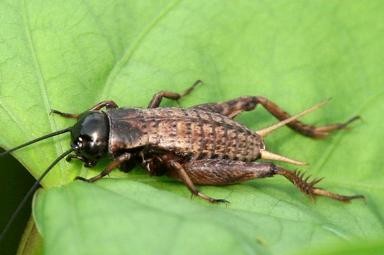
Identification and Habits
Field crickets are larger than house crickets and are typically dark brown or black. They measure about 15-30 millimeters in length. Field crickets are known for their powerful, melodious chirping, which can be heard during late summer and fall.
They are primarily outdoor insects, living in fields, gardens, and under rocks.Field crickets are nocturnal and are attracted to light, which often leads them to enter homes and other buildings. Inside, they can hide in basements, garages, and crawl spaces.
Damage and Control
Field crickets can cause significant damage both indoors and outdoors. They chew on fabrics, paper, and plants. In gardens, they can damage seedlings and soft fruits.
Control Measures:
- Exterior Lighting: Use yellow “bug” lights outdoors to reduce attraction.
- Yard Maintenance: Keep grass short and remove debris and weeds where crickets can hide.
- Barrier Treatments: Apply insecticides around the foundation and entry points of homes.
- Indoor Traps: Place sticky traps in areas where crickets are found.
3. Camel Cricket (Rhaphidophoridae)
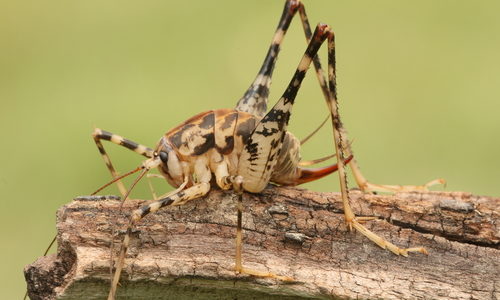
Identification and Habits
Camel crickets, also known as cave crickets, are named for their humpbacked appearance. They are wingless and have long antennae and large hind legs, which they use to jump. Camel crickets prefer cool, damp environments such as basements, crawl spaces, and bathrooms.
These crickets do not chirp, making them less noticeable until they are seen. They are most active at night and are known to congregate in large numbers, which can be alarming.
Damage and Control
While camel crickets do not cause significant damage, their presence in large numbers can be unsettling. They may chew on fabrics, stored items, and paper products.
Control Measures:
- Moisture Control: Use dehumidifiers to keep areas dry.
- Sealing Cracks: Seal entry points around the home to prevent entry.
- Reduce Clutter: Keep storage areas organized to eliminate hiding places.
- Glue Boards: Place glue boards in areas where camel crickets are found.
4. Mole Cricket (Gryllotalpidae)
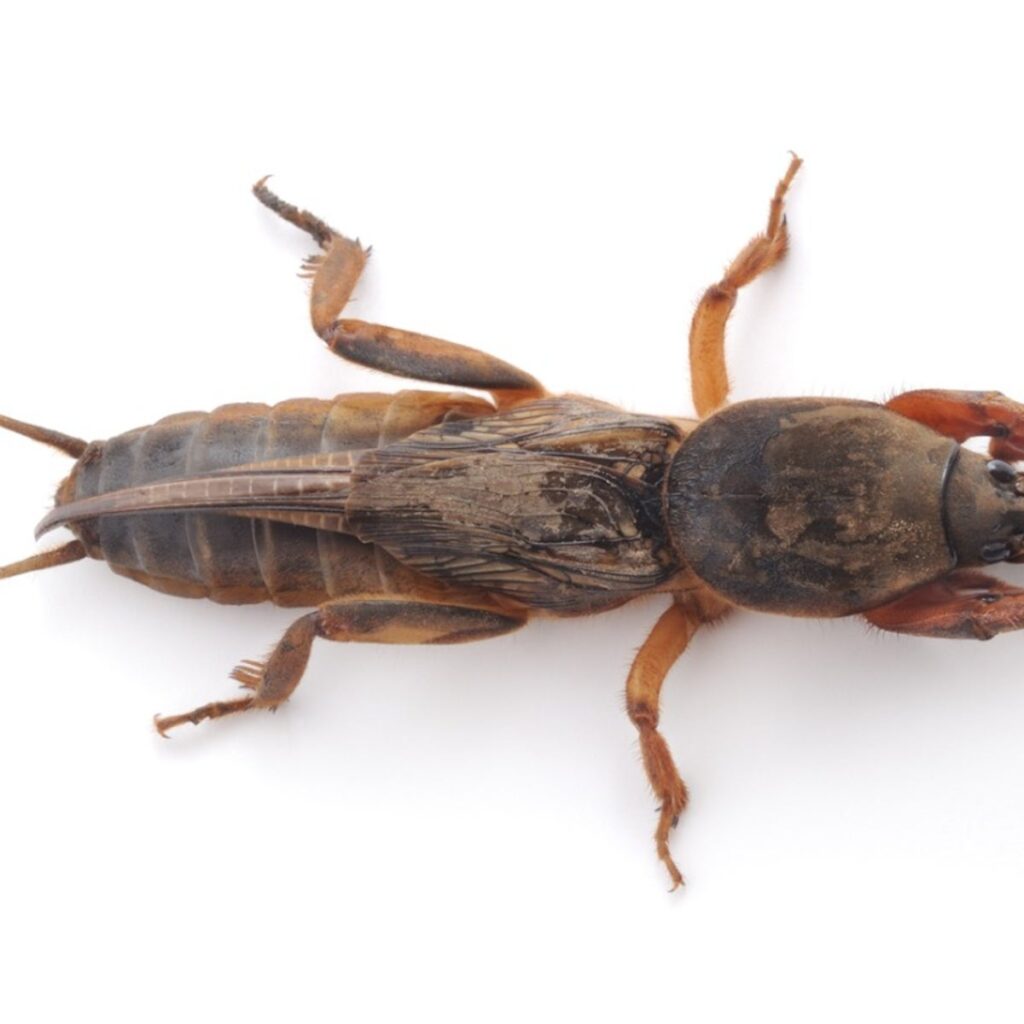
Identification and Habits
Mole crickets are known for their unique burrowing behavior. They have cylindrical bodies and large, spade-like forelimbs adapted for digging. Mole crickets are typically brown and can grow up to 35 millimeters in length.
They are primarily found in sandy soils and are most active during the spring and summer.These crickets are nocturnal and feed on plant roots, which can cause significant damage to lawns and gardens.
Damage and Control
Mole crickets are considered major pests in agricultural settings and can cause extensive damage to turf and crops by uprooting plants and creating mounds of soil.
Control Measures:
- Soil Moisture Management: Avoid overwatering lawns to make the soil less attractive to mole crickets.
- Insecticides: Apply targeted insecticides to infested areas, especially in the spring when nymphs are active.
- Natural Predators: Encourage the presence of natural predators like birds and parasitic wasps.
- Nematodes: Use beneficial nematodes to control mole cricket populations biologically.
5. Ground Cricket (Nemobinae)

Identification and Habits
Ground crickets are small, brownish crickets that live close to the ground. They are less likely to invade homes but are common in gardens and lawns. Ground crickets are smaller than most other cricket species, measuring about 10-15 millimeters in length. Their chirping is softer and less frequent.
Ground crickets are active during late summer and fall, and they prefer areas with thick vegetation and leaf litter.
Damage And Control
Ground crickets can cause damage to plants and crops by feeding on seedlings and young leaves. Their populations can grow rapidly, leading to significant plant damage.
Control Measures:
- Garden Maintenance: Regularly weed and thin out dense vegetation to reduce hiding places.
- Mulch Management: Use mulch sparingly and keep it away from plant stems.
- Barriers: Install physical barriers like row covers to protect crops.
- Insecticides: Apply insecticides if ground cricket populations become problematic.
6. Tree Cricket (Oecanthinae)
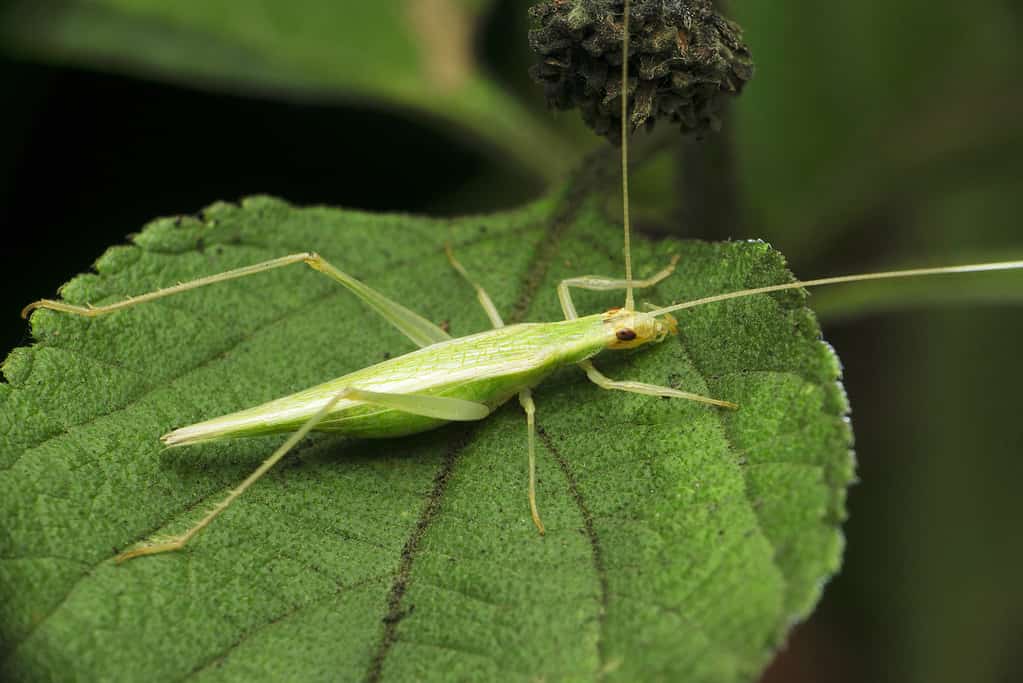
Identification and Habits
Tree crickets are slender, pale green or white crickets that live in trees and shrubs. They are known for their piercing, melodious chirps, which are produced by males to attract females. Tree crickets are about 15-20 millimeters in length and have long antennae.
These crickets are less likely to invade homes, but they can be a nuisance in residential areas due to their loud chirping. They are active at night and are often found in gardens and orchards.
Damage and Control
Tree crickets can cause damage to fruit trees and ornamental plants by feeding on leaves, flowers, and fruits. They also lay eggs in plant stems, which can weaken and deform the plants.
Control Measures:
- Pruning: Regularly prune trees and shrubs to reduce suitable egg-laying sites.
- Monitoring: Inspect plants for signs of egg-laying and damage.
- Barriers: Use protective barriers like tree wraps to prevent access to trunks and branches.
- Natural Predators: Encourage the presence of natural predators like birds and spiders.
7. Jerusalem Cricket (Stenopelmatidae)
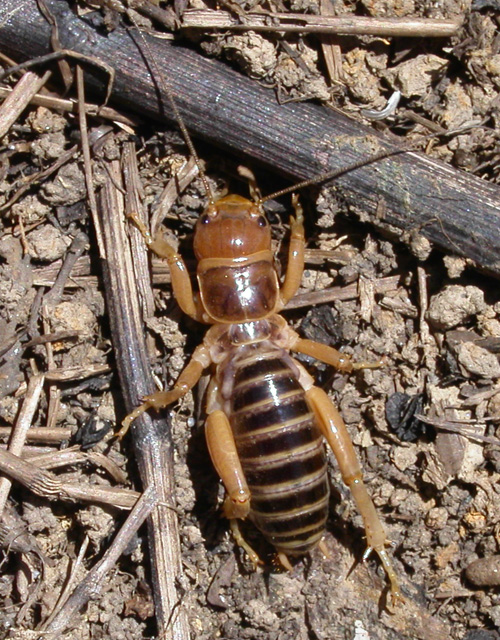
Identification and Habits
Jerusalem crickets, also known as potato bugs, are large, flightless insects with a distinctive appearance. They have a large, rounded head, strong mandibles, and a striped abdomen. These crickets can grow up to 50 millimeters in length and are found primarily in the western United States.
Jerusalem crickets are nocturnal and spend most of their time underground, emerging at night to feed. They are often found in gardens and agricultural fields.
Damage and Control
Although Jerusalem crickets do not chirp, they can cause damage to crops and garden plants due to their burrowing and feeding habits. They feed on roots, tubers, and decaying organic matter.
Control Measures:
- Soil Management: Avoid excessive irrigation to discourage burrowing.
- Physical Barriers: Use barriers to protect plants from feeding.
- Hand Removal: Remove visible crickets by hand and relocate them away from gardens.
- Insecticides: Apply insecticides to infested areas if necessary.
8. Tropical House Cricket (Gryllodes sigillatus)
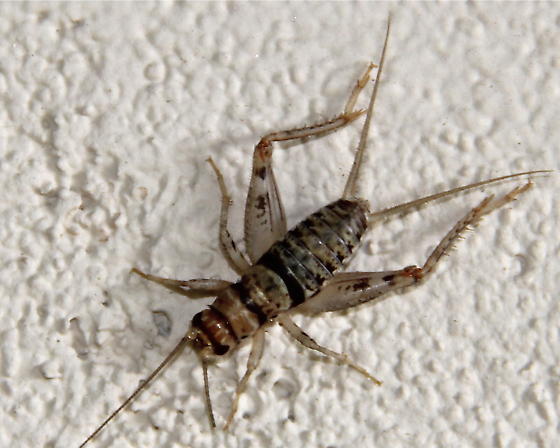
Identification and Habits
Tropical house crickets are similar in appearance to house crickets but are slightly smaller and lighter in color. They measure about 13–18 millimeters in length and are commonly found in warmer climates. Like house crickets, they produce loud, continuous chirping.
Tropical house crickets are often found in homes, particularly in kitchens and bathrooms, where they seek warmth and moisture.
Damage and Control
Tropical house crickets can damage fabrics, stored products, and plants. Their presence in homes can be a significant nuisance due to their chirping and potential to contaminate food.
Control Measures:
- Sealing Cracks: Inspect and seal entry points to prevent crickets from entering.
- Moisture Control: Use dehumidifiers and fix leaks to reduce indoor humidity.
- Cleaning: Keep kitchens and bathrooms clean and free of food crumbs.
- Traps and Baits: Use sticky traps and baits to capture and eliminate crickets.
Comprehensive Pest Control Strategies
Effective pest control for crickets involves a combination of preventive and active measures. Here are some general strategies that apply across different cricket species:
Preventive Measures
- Sealing Entry Points: Inspect and seal cracks
, gaps, and openings around doors, windows, and foundations to prevent crickets from entering buildings.
- Reducing Moisture: Crickets are attracted to damp environments, so reducing moisture levels in basements, crawl spaces, and other areas can help deter them.
- Using Baits and Traps: Commercial baits and sticky traps can be effective in reducing cricket populations indoors.
- Maintaining Cleanliness: Regular cleaning and decluttering can remove potential food sources and hiding places for crickets.
- Lawn and Garden Care: Regular mowing, weeding, and reducing thatch in lawns can help control outdoor cricket populations. In gardens, using row covers and other protective measures can prevent crickets from damaging plants.
Active Control Measures
- Insecticides: Applying insecticides around the foundation and entry points of homes can help prevent crickets from entering. For outdoor infestations, targeted insecticide treatments can reduce cricket populations.
- Natural Predators: Encouraging the presence of natural predators like birds, spiders, and parasitic wasps can help keep cricket populations in check.
- Biological Control: Using beneficial nematodes or fungi can help control soil-dwelling crickets like mole crickets and Jerusalem crickets.
- Professional Pest Control: For severe infestations, professional pest control services may be necessary to effectively manage and eliminate cricket populations.
Conclusion
Crickets, while often appreciated for their musical contributions to the night, can become significant pests when they invade homes, gardens, and agricultural areas. Understanding the different types of crickets and their behaviors is crucial in implementing effective pest control measures.
By combining preventive strategies with targeted control methods, it is possible to manage cricket populations and minimize their impact on our environments.Whether it’s the familiar house cricket or the burrowing mole cricket, each species requires specific approaches to control.
By staying vigilant and proactive, home+ can enjoy the benefits of a cricket-free environment, ensuring peace, tranquility, and the protection of valuable plants and property.
